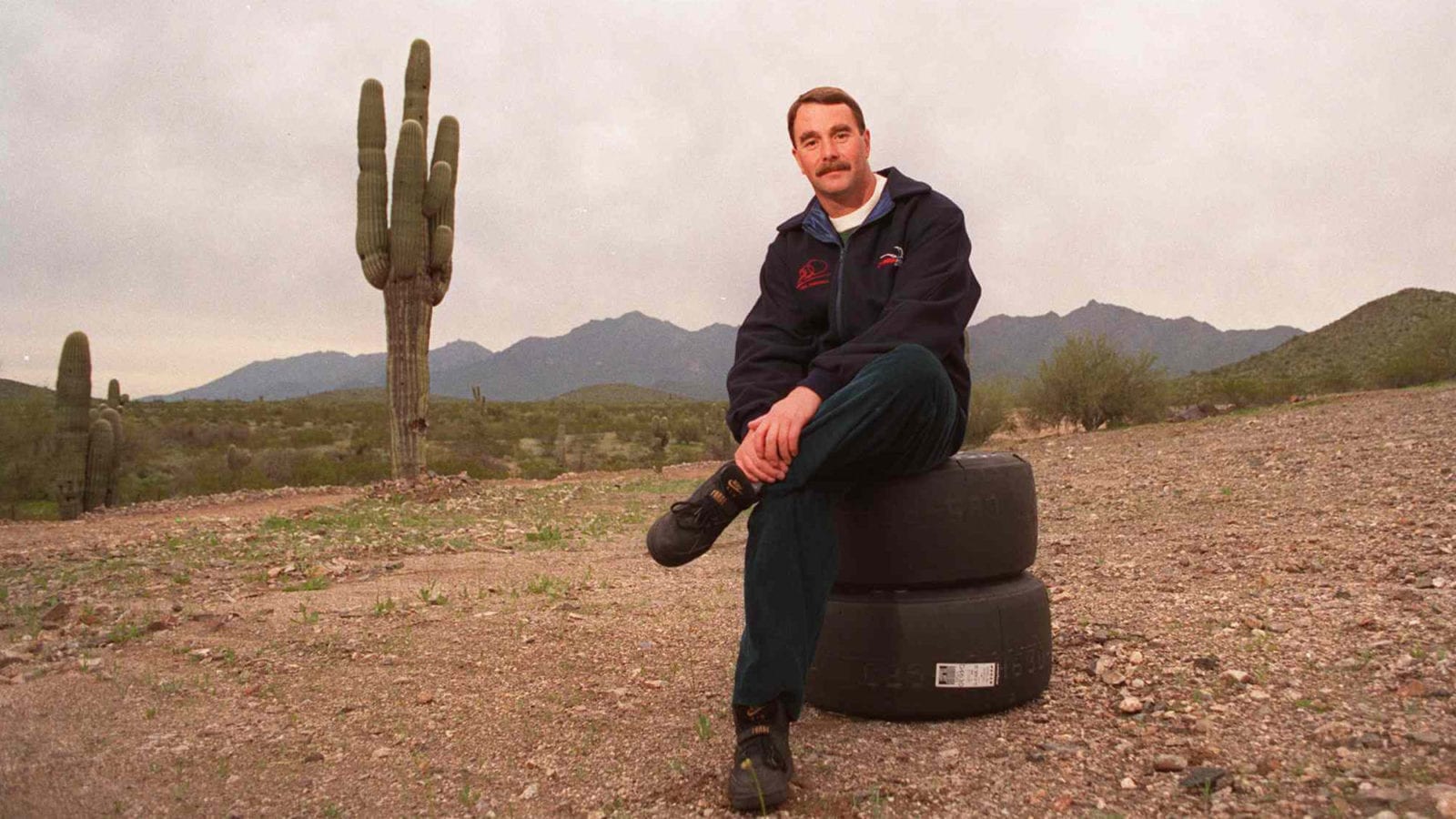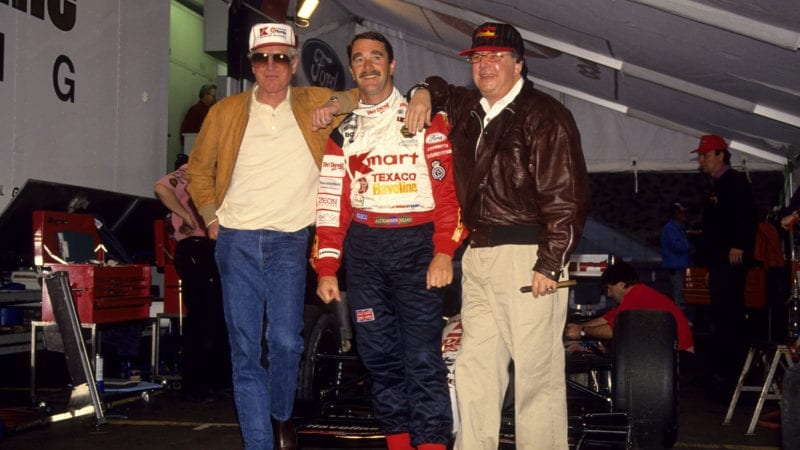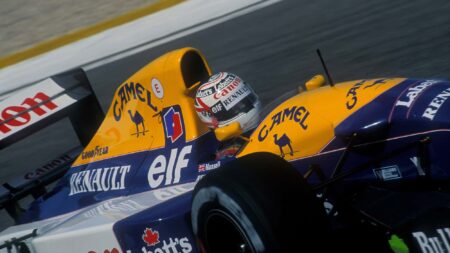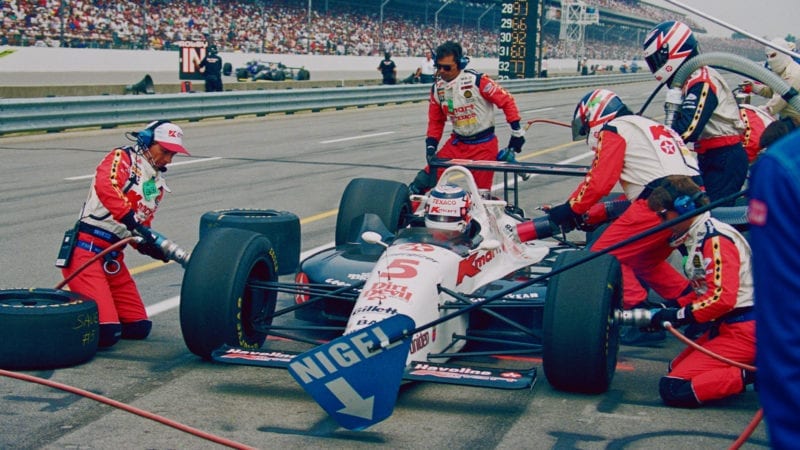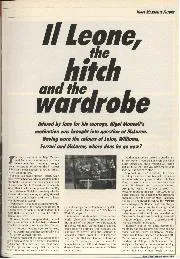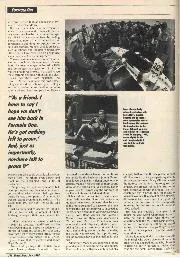He was beaten away from the rolling start by Fittipaldi and Tracy, then fell to fourth before fighting his way into the lead by outbraking Fittipaldi in a cloud of tyre smoke.
It transpired that Mansell had passed Fittipaldi under a yellow flag and he subsequently served a stop-go penalty. Mansell then brushed the wall, puncturing a tyre and falling to fourth after a stop for fresh rubber. But again he charged into the lead, winning by 3sec from Fittipaldi. It was a rousing start.
During practice for the next race at Phoenix, Mansell learned a big lesson about ovals. His bravery got the better of him as he entered the first turn way too quickly and spun backwards into the wall. It was an extremely hard hit, punching a hole in the cement and putting Mansell out of action for a few weeks. He was knocked unconscious and suffered a couple of cracked vertebrae and some muscle damage.
“The toughest thing that year was coming back from the accident,” Mansell said later. “Some people didn’t seem to appreciate how bad it was. It took a little time for me to get over the pains and be 100 per cent fit. That was the biggest thing I achieved that year.”
McGee had warned Mansell to be careful. “At Phoenix he just made a huge mistake,” he says. “I told him, ‘Nigel, you’re going to crash.’ But he had a theory that he knew exactly what he was doing. He claimed he, Senna and Prost had developed a technique that enabled them to get away with this type of driving, where they had a wide entry into the corner and really jerked the car down. In those days the cars were blowing the exhausts through the tunnels and as long as you kept your foot in it created more downforce. But the moment you got out of the throttle, the downforce would disappear. After that accident, Nigel realised he was going to have to adjust his theory.”
With Mansell out of action, Andretti came through to score his first win in four and a half years – his 52nd and final IndyCar victory.
At Long Beach two weeks later, Mansell bounced back to take pole from Tracy and Fittipaldi while Andretti qualified fifth. Tracy took a dominant win while Mansell hung on for third, despite considerable back pain.
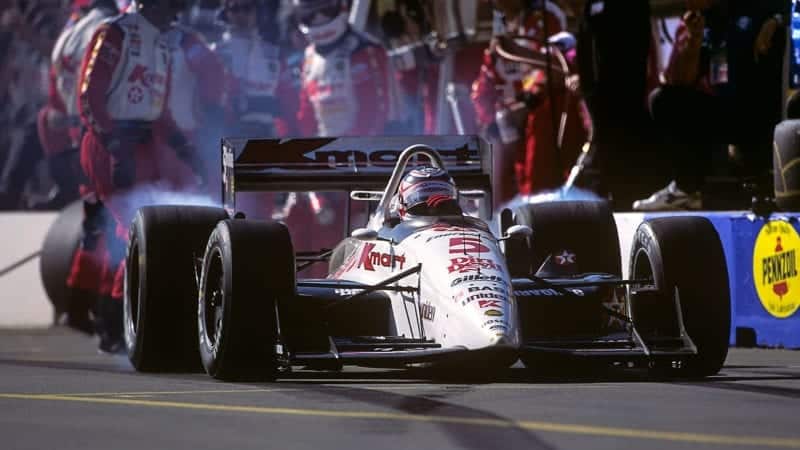
Mansell immediately got to grips with the series, winning on his debut
Paul-Henri Cahier/Getty Images
Mansell underwent surgery before practice started at Indianapolis in May and that prevented his participation in rookie orientation. He also missed most of the opening week of practice, but when he finally arrived he immediately came to grips with the speedway.
Andretti was the pacesetter at Indianapolis through the opening week and was provisionally quickest for six hours on Pole Day, but Arie Luyendyk made a late qualifying run in slightly better conditions to pip him. Meantime, Mansell had no problem settling in and qualified eighth, learning all the time.
